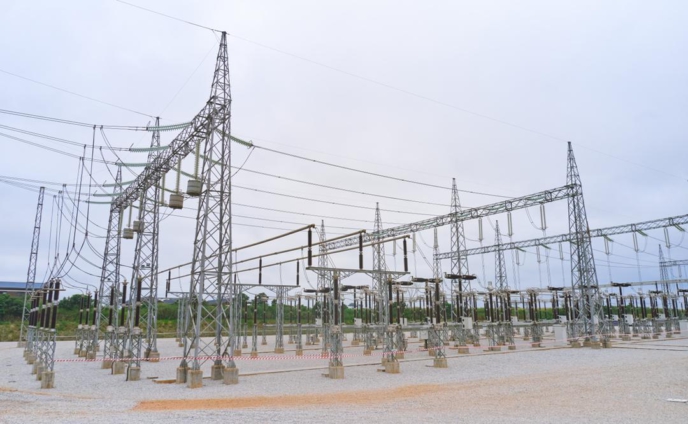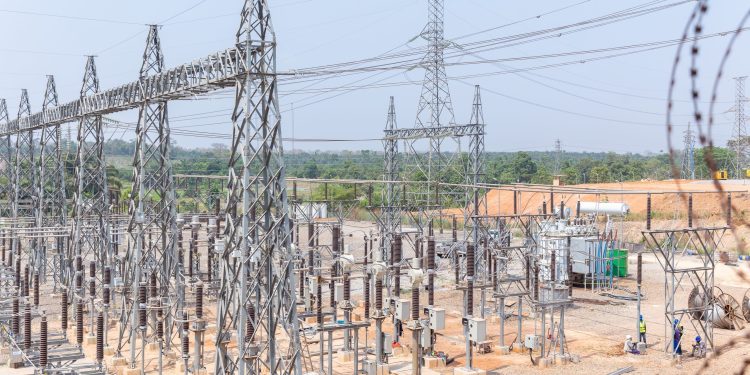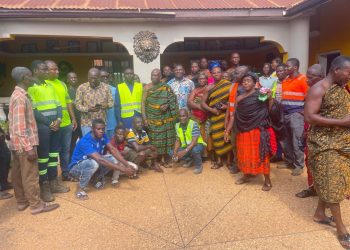The Ghana Grid Company (GRIDCo) has raised grave concerns about the growing danger illegal mining, popularly called galamsey, poses to its transmission infrastructure, warning that the reckless encroachment of miners near power installations could precipitate a national disaster.
At a press briefing in Tema, Frank Otchere, the Acting Deputy Chief Executive Officer of Engineering and Operations, disclosed that galamsey operators are now digging dangerously close to the foundations of transmission towers in certain parts of the country. These towers, he explained, are designed with precision engineering to withstand enormous weight and pressure, and any tampering with their foundations compromises their stability.
“The activities of illegal miners are directly threatening the safety of our transmission lines,” Mr. Otchere warned.
“Unfortunately, there are some areas that even when our maintenance teams go there, they get shot at. Some of them have had to run away. This situation has made it impossible for GRIDCo to carry out basic operations in certain places without security protection.”
He appealed for urgent national security intervention, cautioning that if any of these towers collapsed due to weakened foundations, it could not only interrupt the nationwide electricity supply but also endanger lives.
Attacks on maintenance staff
GRIDCo officials have previously raised alarms about galamsey’s effect on rivers, forests, and farmland, but this latest revelation highlights a direct threat to Ghana’s energy security. Transmission corridors, which must remain free of encroachment to allow easy access for maintenance, are now becoming hazardous zones.
Mr. Otchere described disturbing scenes of company engineers fleeing for their lives when confronted by armed miners.
“We cannot continue to risk our staff without additional protection. This is beyond GRIDCo’s control and requires coordinated security action at the national level,” he stressed.
$353m Eastern Corridor transmission project
Even as GRIDCo battles these existential threats, it has announced the start of procurement processes for a major new investment—the Eastern Corridor Transmission Project.
Director of Engineering, Nicholina Yembilah, outlined the project, which involves the construction and expansion of critical substations along a 161kV transmission line running from Asebe through Boho, Kajeibi, Salaga, and Banda in Ghana’s Eastern Corridor.
“These projects are not cheap projects; they are very expensive projects,” Ms. Yembilah noted.
“We have prepared high-level cost estimates and submitted them to the Ministry of Energy. The government has directed us to begin procurement, with the project expected to cost about $353 million.”
The project will be undertaken in phases and is intended to enhance electricity transmission, improve reliability, and support the growing demand for power across the country.

Feasibility, environmental, and social impact studies
According to Ms. Yembilah, before the government can secure loans from international development partners, detailed feasibility studies must be conducted alongside environmental and social impact assessments.
“The feasibility study will give us the true cost of the project, with high-level designs, system layouts, and how to safely evacuate the power. But equally important are the environmental and social studies, especially the resettlement action plans, because transmission projects often affect homes and communities,” she explained.
She stressed that funding agencies such as the World Bank, the African Development Bank (AfDB), and Agence Française de Développement (AFD) will only commit to financing once they are satisfied with GRIDCo’s social responsibility measures.
Timeline and challenges
The project has been handed over to GRIDCo’s Project Implementation Unit, which manages donor-funded ventures.
A request for expression of interest is being prepared to select consultants for the feasibility and impact studies.
Given the complexity of the process, Ms. Yembilah projected that full implementation would likely commence in 2027.
“The feasibility and impact studies alone will take at least one year. And even then, we need approvals and financial clearance under the Public Financial Management Act before we can begin,” she said.
Meanwhile, smaller interventions are being considered to bridge immediate gaps.
At the Kpeve Substation, for instance, plans are underway to install a transformer already on site, even before the larger project begins.
Balancing urgent threats with future plans
GRIDCo finds itself grappling with a dual challenge: addressing the immediate danger posed by galamsey to its existing infrastructure while simultaneously pushing ahead with long-term projects to strengthen the transmission network.
While the $353 million Eastern Corridor project holds promise for improved power delivery and economic growth, the company insists that its success depends on curbing illegal mining activities that threaten the very foundations of Ghana’s electricity system.











